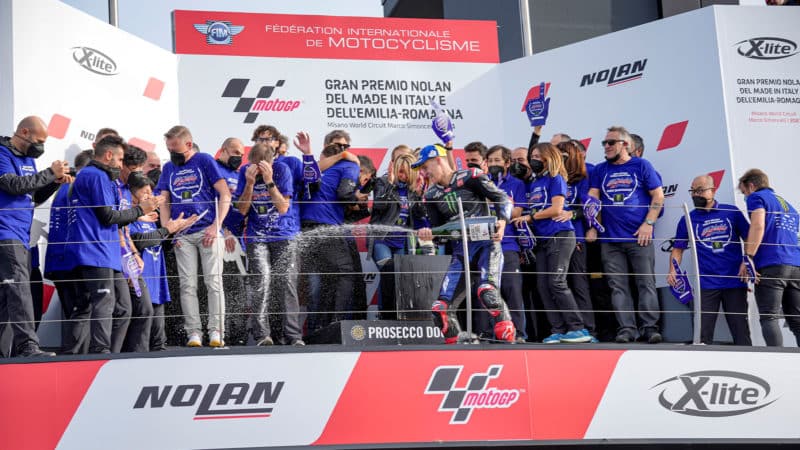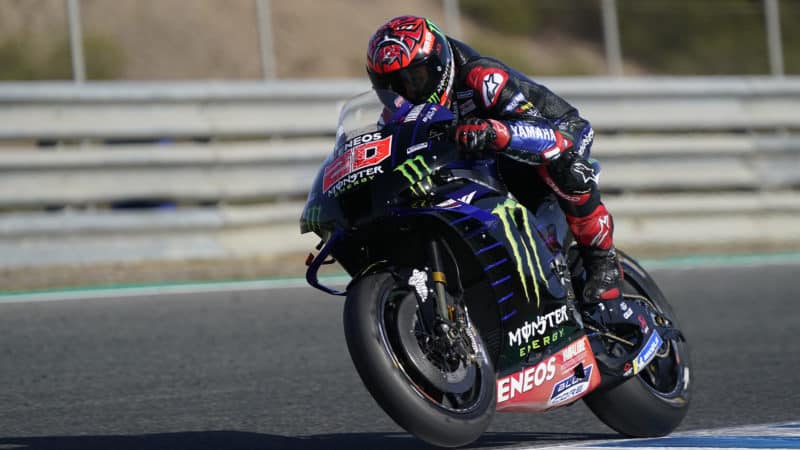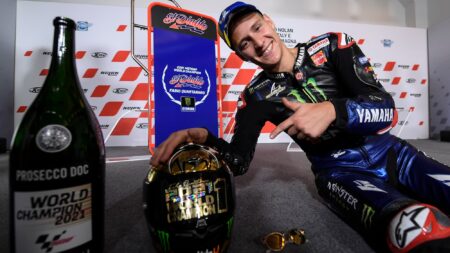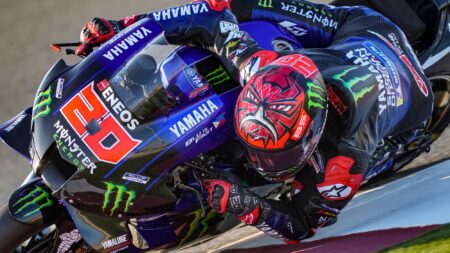“For 2020 we made big changes to the engine and chassis and we were stronger, so Fabio, Maverick [Viñales] and Frankie [Morbidelli] could get many victories. Our bike’s total performance was stronger but the consistency wasn’t good and we couldn’t understand why.”
Like most MotoGP engineers, Sumi won’t talk details, but the 2020 engine was different inside and out, which changed overall bike rigidity. At the same time Yamaha moved parts around to allow better intake airflow, for more power, which changed overall bike balance. This may explain the 2020 M1’s sensitivity to different track and weather conditions.
“Our target for 2021 was to obtain consistency. Engine development was frozen, so we changed the chassis to regain the same performance as the 2019 bike, which our riders said had better braking and turning performance.”
Quartararo loved the 2021 M1 from the start.
“I understood the bike really well and with that great feeling I could always push to my maximum and push to the limit,” says the 22-year-old Frenchman who won five races on his way to his first world title.
The Magneti-Marelli/Michelin situation also improved for Yamaha. Unlike the other factories Yamaha didn’t poach staff from Magneti to help them get the most out of the software, because they wanted to solve their issues in-house, but finally in 2019 they did hire someone from Magneti.
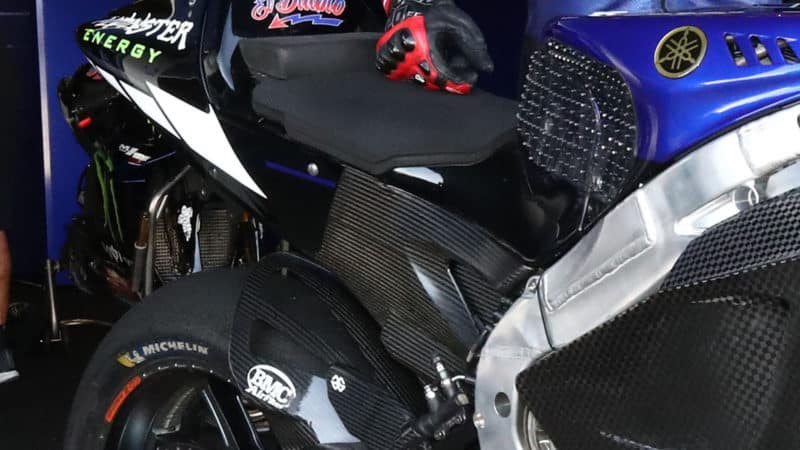
New section welded into Jerez test frame changes lateral stiffness for improved turning and rear grip
Then in 2020 Michelin introduced its softer-construction rear slick, which generally worked better for the smooth-cornering inline-fours.
“From the outside it looked like the other manufacturers struggled more with the tyre, so maybe it helped us,” Sumi explains.
“Also we tried to understand better how the tyre performs and how it loses its performance, so now we control this better, by the bike and the rider, so we can conserve tyre performance to the end of the race.”
Yamaha also made a breakthrough with the electronics for 2021, reducing the amount of traction control employed during the latter half of races, relying on the rider instead.
“I don’t want to imagine our bike surrounded by eight Ducati bikes”
Sumi has one big target for 2022.
“Engine power for speed on the straights is the main point to improve. Our riders are fast with our bike but even if they are one second faster in lap times sometimes they struggle to overtake, especially when fighting with the Ducatis.”
Quartararo agrees. “My only request to the engineers is to focus on top speed – if I have the same bike plus some more horsepower I will be happy.”
Yamaha is also working on chassis performance, with revised frames evaluated during last month’s Jerez tests. These featured different rigidity because chassis flex helps turning and the sooner the rider can get the bike turned the sooner he can accelerate, which means more straight-line speed.
And yet however much extra power Yamaha finds from its M1 engine Sumi must be a bit worried about having eight Desmosedicis on next year’s MotoGP grid.
“Not a little bit,” he smiles. “I don’t want to imagine our bike surrounded by eight Ducati bikes.”
The difference in straight-line performance between the Ducati (MotoGP’s fastest bike) and the Yamaha (its slowest) is jaw-dropping. At the last race at Valencia – a good track to gauge horsepower, anti-wheelie aero and electronics, because the entry to the straight is very slow – the best Yamaha reached 199.9mph, while the best Ducati did 208.4mph!
Quartararo wants Yamaha to increase its anti-wheelie aero but Yamaha can’t because the M1 engine doesn’t have the horsepower to cope with the extra drag. So Yamaha is damned if it does and damned if it doesn’t.
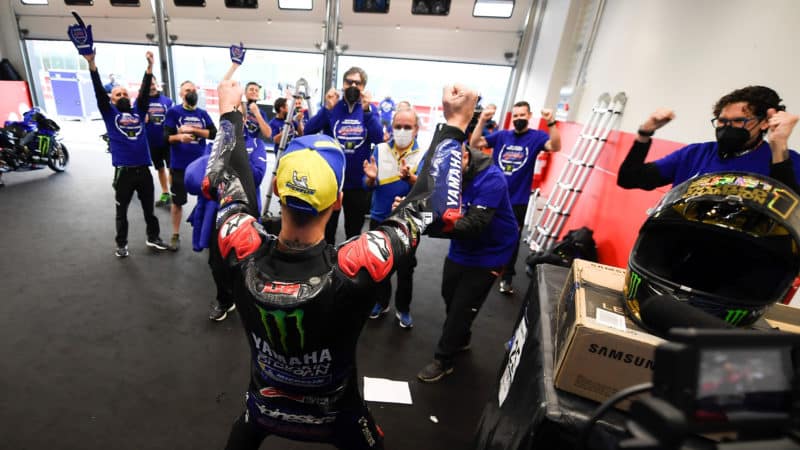
Quartararo celebrates the title with his crew, including crew chief Gubbelini (right)
Yamaha
Yamaha will have to work more carefully than ever to beat the phalanx of Dukes in 2022. Once again its engineers must focus on qualifying, the start and the opening laps to get out front, because what the M1 needs is a clear track and clean air, so riders can carve their big, arcing cornering lines to exploit the bike’s corner-speed advantage and keep their front tyres cool.
As soon as a Yamaha rider gets mixed up with a few other bikes he can’t use his preferred cornering lines, then the heat from the other machines increases his front tyre pressure, which changes the tyre’s profile, reducing grip.
Quartararo is lucky that he has a very clever and tight-knit crew around him, specifically crew chief Diego Gubbelini and data engineer Pablo Guilliem.
